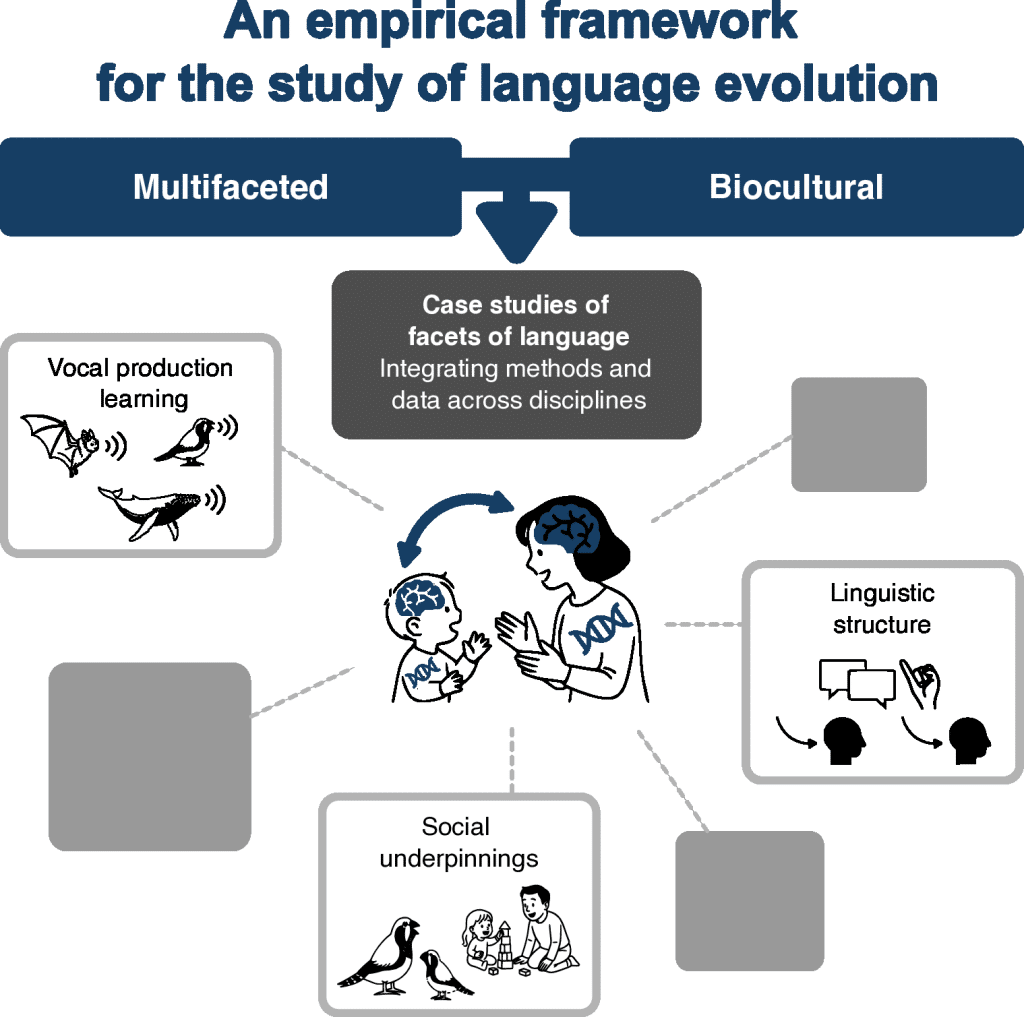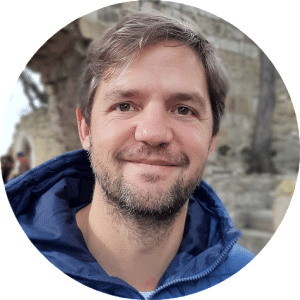What enables human language? A biocultural framework

To account for human language, we propose a multifaceted and explicitly biocultural framework grounded in empirical investigations spanning a diverse array of empirical and theoretical fields. The framework is illustrated with three facets of language with distinctive evolutionary history, each involving multiple disciplines and several species — e.g., humans, primates, and songbirds. Such case studies highlight the importance of both biological preparedness and cultural processes, as well as the interactions between them, in the emergence of language. The empty gray boxes suggest other facets of language, not discussed, that could be similarly investigated under this framework.
Arnon, Inbal, Liran Carmel, Nicolas Claidière, et al. 2025.
What Enables Human Language? A Biocultural Framework
Science 390 (6775): eadq8303. — @HAL
Nicolas Claidiere
 Nicolas Claidiere is a CNRS Research Director at CRPN, where he co-leads the development and phylogeny research group (DePhy) and directs the Primate Cognition and Behaviour platform. His research lies at the intersection between psychology, animal behaviour, and evolutionary biology, with a focus on understanding how social behaviour emerges, spreads, and evolves.
Nicolas Claidiere is a CNRS Research Director at CRPN, where he co-leads the development and phylogeny research group (DePhy) and directs the Primate Cognition and Behaviour platform. His research lies at the intersection between psychology, animal behaviour, and evolutionary biology, with a focus on understanding how social behaviour emerges, spreads, and evolves.
Using a comparative approach that brings together human and non-human primates, he investigates the cognitive and social mechanisms that underpin social learning and cultural evolution. A central theme of his work is how information flows within groups, how social networks shape individual and collective behaviour, and how these dynamics give rise to stable traditions or rapid innovation.
Aline Frey
 Aline Frey (MdC, CRPN) has been awarded the price “Prix Chercheurs en Actes” in the category “Elementary School” for her ongoing project “Chant et Ecriture Créative au Quotidien” conducted with Gisèle Traversa (School Teacher), Stéphanie Miolan (School Principal), Nathalie Bonnardel (professor, PsyClé), and Cédric Hubert (PhD Student, CRPN & PsyClé).
Aline Frey (MdC, CRPN) has been awarded the price “Prix Chercheurs en Actes” in the category “Elementary School” for her ongoing project “Chant et Ecriture Créative au Quotidien” conducted with Gisèle Traversa (School Teacher), Stéphanie Miolan (School Principal), Nathalie Bonnardel (professor, PsyClé), and Cédric Hubert (PhD Student, CRPN & PsyClé).
Congratulations to all from ILCB!
Validation d’une nouvelle procédure d’évaluation de l’aphasie critique et post-critique
Véronique Sabadell, Agnès Trébuchon (INS), & Xavier Alario (CRPN)
Effective Dyslexia Remediation: A Home-Based Multi-Component Program
Johannes C. Ziegler, Ambre Denis-Noël, Bruno de Cara, et al.
2025. A.N.A.E. Approche Neuropsychologique des Apprentissages chez l’Enfant, no. 197 (Août). — @HAL
A Tool to Probe Domain-General Syntax: Simple and Complex Actions with a Tool Improve Syntactic Comprehension in Language
Raphaël Py, Marie-Hélène Grosbras, Claudio Brozzoli, and Marie Montant.
2025. Current Research in Behavioral Sciences 9: 100190. — @HAL
Predicting Meaning in the Dyad
Emilia Kerr, Benjamin Morillon, and Kristof Strijkers.
2025. Journal of Experimental Psychology: General 154 (12): 3405–16. — @HAL
Voice Identity Invariance by Anterior Temporal Lobe Neurons
Margherita Giamundo, Régis Trapeau, Etienne Thoret, Luc Renaud, Thomas Brochier, and Pascal Belin
2025. Science Advances 11 (35): eadv7033. — @HAL
Print Exposure and Reading Development in the French Educational Context: A Systematic Review
Brice Brossette, Marie Vernet, Chloé Prugnières, Mee-Jin Chalbos, Johannes C. Ziegler, and Stéphanie Ducrot.
2025. International Journal of Educational Research 134 (January): 102838 — @HAL
Editorial: Neural and Behavioral Mechanisms of Social Learning
Laura A. Agee, Marie-H. Monfils, and Abdellah Fourtassi.
2025. Frontiers in Human Neuroscience 19 (February): 1566408. — @HAL
